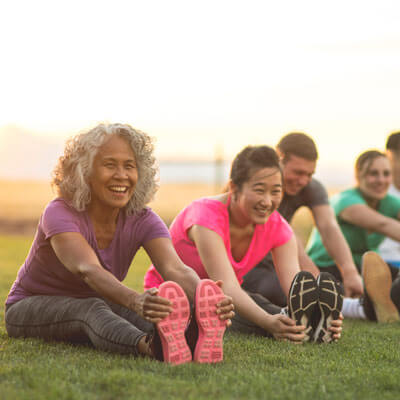Move Better. Feel Better. Live Better.
 When your body doesn’t move the way it used to, everything feels harder—getting out of bed, playing with your kids, hitting the gym, or even sitting at your desk. At Hoover Spine and Joint Center, we help people of all ages restore flexibility, reduce pain, and regain confidence in their movement. Whether you’re dealing with an old injury, chronic stiffness, or just want to feel more mobile again, chiropractic care may be the missing piece.
When your body doesn’t move the way it used to, everything feels harder—getting out of bed, playing with your kids, hitting the gym, or even sitting at your desk. At Hoover Spine and Joint Center, we help people of all ages restore flexibility, reduce pain, and regain confidence in their movement. Whether you’re dealing with an old injury, chronic stiffness, or just want to feel more mobile again, chiropractic care may be the missing piece.
What Is Range of Motion (ROM)?
Range of motion refers to how far and how easily your joints and muscles can move through their intended directions. Healthy ROM means you can move freely without discomfort. But injuries, postural imbalances, repetitive strain, or certain conditions like arthritis can all restrict your range.
Patients with compromised ROM often describe:
- Stiffness or limited movement in a joint
- Pain when trying to stretch or rotate
- Difficulty with everyday motions (like turning the head or reaching overhead)
The good news? Chiropractic care offers natural solutions that help restore motion and reduce the underlying tension causing restriction.
Types of Range of Motion
Understanding the types of ROM can help tailor your care:
- Passive ROM (PROM): Movement performed entirely by an external force (like a chiropractor) with the patient fully relaxed.
- Active-Assisted ROM (AAROM): The patient initiates movement but receives partial assistance.
- Active ROM (AROM): Movement completed entirely by the patient using their own muscle power.
Your provider at Hoover Spine and Joint Center will evaluate which type of motion is limited and build your care plan accordingly.
How Chiropractic Can Help
Improving range of motion often requires a combination of hands-on therapies, guided movement, and patient education. Your personalized plan might include:
Chiropractic Adjustments
Misalignments in the spine or joints can restrict mobility and cause discomfort. Gentle adjustments help restore alignment and allow your joints to move as they were meant to.
Soft Tissue Therapy
Massage, trigger point work, or instrument-assisted techniques help release tight muscles, improve circulation, and break up adhesions that limit movement.
Stretching & Strengthening Exercises
Guided exercises support flexibility and build strength to stabilize your joints. These also help prevent future stiffness or injury.
Lifestyle & Postural Guidance
We’ll help you identify habits or movements that may be contributing to reduced ROM and give you simple strategies to stay mobile and pain-free.
What to Expect at Your Visit
During your first appointment, we’ll perform a thorough assessment including:
- Health history and symptom review
- Range of motion and flexibility testing
- Postural evaluation and joint assessment
We may also request imaging (like X-rays) if needed to rule out more complex issues. From there, we’ll build a step-by-step plan designed to help you feel and move better.
Ready to get moving again? Request an appointment today.
